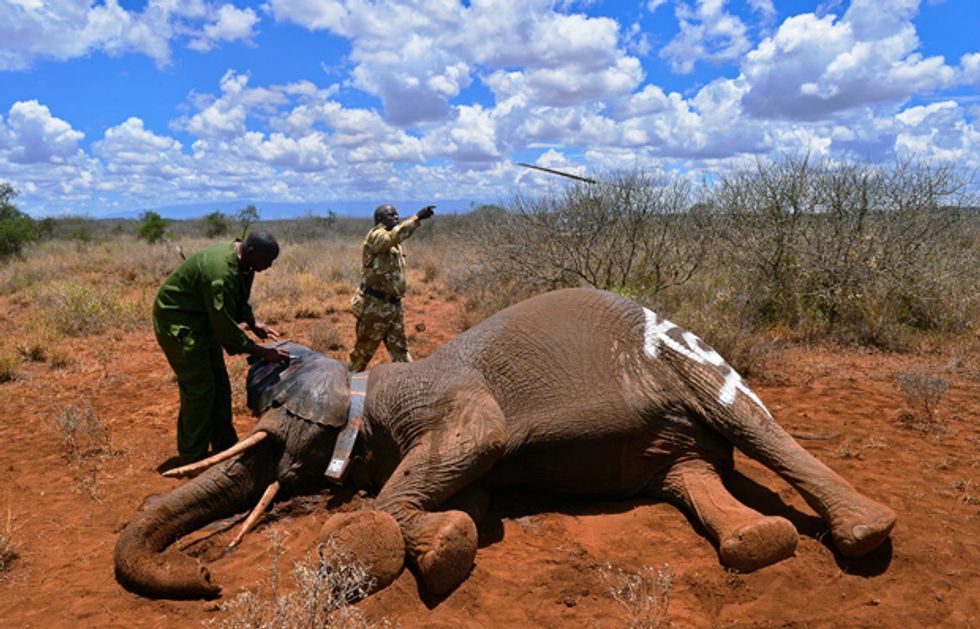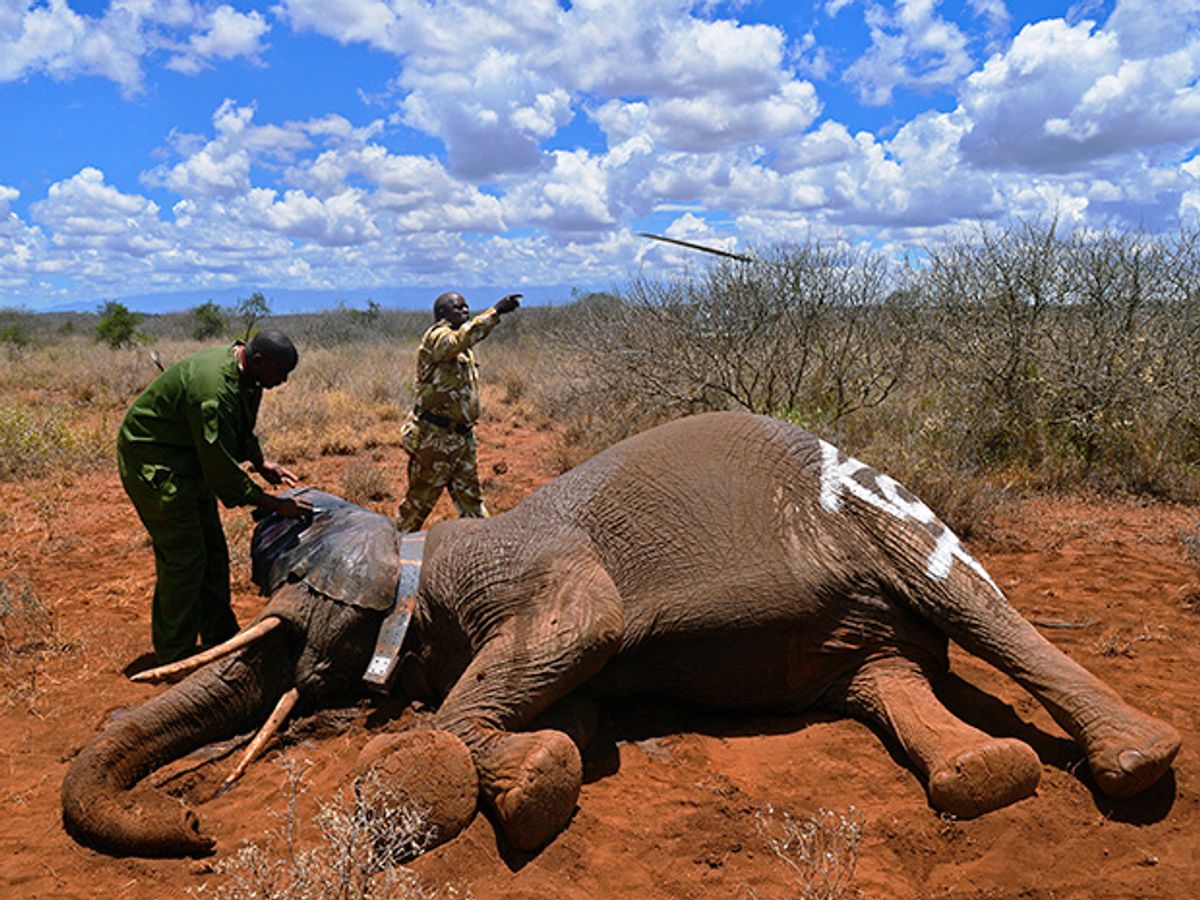
Our Toyota truck burst through the dense jungle and into a clearing. Before us stood two startled men with rifles. Their wives, nearby, brandished machetes. Piles of dead animals were stacked high on two bicycles.
We had found our illegal hunters. In an instant, the soldier sitting next to me raised his pistol. I feared a shootout, but the bush hunters lowered their weapons and began to plead with the soldier in a shared language. Quickly a deal was struck: The hunters got to escape with their wives and pillage, while we got the prize we sought, a newborn chimpanzee.
We found the baby male chimp staked to the ground, a rope around his neck. The hunters had killed his parents. Once untied, the chimp clung tightly to the chest of the expert caregiver with us.
Our rescue mission happened 10 years ago in central Cameroon at a time when wildlife protection was becoming militarized. Park ranchers, or soldiers on loan, like mine, routinely engaged in shootouts with poachers. Successes were rare. Too often, good guys paid with their lives.
They still do, which is why clever engineers are inventing new forms of “wild tech” that keep both rare animals, and their human protectors, safer. The revolution is based on remote, real-time monitoring of African animals, relying on attached collars or sensors, satellite tracking, embedded sensors in the landscape, and—in the near future—swarms of small drones. To analyze the vast and expanding pool of data about individual animals requires monitoring algorithms that rapidly create indicators about movement, proximity, and location, using “geofencing,” or virtual perimeters of real-world geographic areas.
The goal, simply, is to engineer a “digital net” around every valued animal, so that it can be watched closely and continuously. Advocates of this technology hope that threat precursors can be identified and protective actions set in motion in advance. The ambitious program demands continued miniaturization of sensors, growing communication channels of various kinds, and novel software.
For large animals, such as elephants and giraffes, the digital tools are already revolutionizing conservation practices, as is demonstrated in a 2014 paper by elephant expert Jake Wall [pdf] and his colleagues, based on their real-time monitoring of 94 elephants. As he and his team concluded, “Advancement of technology and the continued expansion of communications networks are allowing targeted, on-animal data collection and the economical and expedient distribution of such data.”
For small animals, monitoring technologies offer even more dramatic advances. Many small animals are geniuses at hiding in the wild. Tracking them individually, even with “camera traps” embedded in the terrain, gives only a partial picture of their movements and the human threats they face. New techniques promise clear pictures of classes of wild animal life that receive only flickering documentation today.
The next phase of the environmentalism we want will be a kind of cyberwar between human poachers and human protectors. The battle lines will no longer exist only in the bush and savannas, along rivers and atop mountains. Soon, park rangers and amateur wildlife guardians will not draw guns on outlaw hunters. Instead, they will counterattack with sensor networks, drones, and dense computational studies managed remotely, with the touch of a keyboard.
In a cruel paradox, when the digital net fails, we might watch an animal die in real time, as gripped by the deadly spectacle as we now are by the Super Bowl. What seems only the stuff of computer games will be woven into the fabric of our lives, and that of the animals we seek to save. And we will call this progress.
About the Author
G. Pascal Zachary teaches at Arizona State University’s School for the Future of Innovation in Society. The chimpanzee he helped save 10 years ago is alive and well in the Sanaga-Yong Chimpanzee Rescue Center, in Cameroon’s Mbargue Forest, thanks to the efforts of the center’s founder, Sheri Speede.
This article appears in the July 2016 print issue as “Thwarting Poachers With Data.”
G. Pascal Zachary is the author of Vannevar Bush’s biography, Endless Frontier: Vannevar Bush Engineer of the American Century (Free Press, 1997), and the editor of The Essential Writings of Vannevar Bush (Columbia University Press, 2022). He has taught at Stanford University, UC Berkeley, and Arizona State University.



